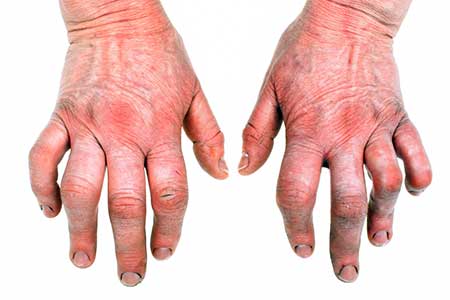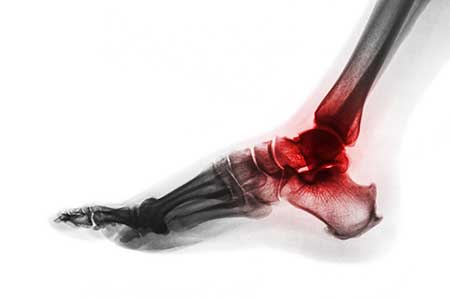Signs of Arthritis for Different Parts of the Body

Many people assume that arthritis only affects the elderly, so it comes as a surprise when they start developing signs of it at a much younger age than expected.
According to the Mayo Clinic, 50 million Americans have some form of arthritis and half of those diagnosed with it each year are under age 65.
The symptoms you experience depend on where it originates in your body. The most common areas include the hands, feet and ankles, knees, hips, and shoulders.
Recognizing the symptoms is the first step in getting the help you need to manage this health condition.
Arthritis in the Hands

Your hands and wrists contain numerous small joints that work in unison to perform tasks such as writing, tying your shoelaces, or opening a door.
These everyday activities become challenging once you develop this pain. It can stem from more than one cause and affect multiple areas of your hands, fingers, and wrists.
Symptoms of Hand Arthritis
The most common symptoms in the hands include:
- A burning or dull sensation after prolonged use of the joints
- Swelling
- Affected joints are warm to the touch
- Greater mobility in nearby joints to accommodate the loss
- Sensation of grinding or grating of joints due to cartilage rubbing together
- Cysts
Arthritis in the Feet and Ankles

Each of your feet contains 30 bones and 28 joints, while each ankle joint contains three major bones that support multiple joints.
Your feet and ankles provide support, shock absorption, balance, and several other functions while you stand, walk, and run.
Several of these joints contain a slippery substance that allows the bones to glide effortlessly during movement. They also have a lining called synovium that reduces friction and lubricates cartilage.
With this disease, the body produces less of these liquids and the joints rub against each other.
Symptoms of Foot and Ankle Arthritis
The following are common symptoms in the feet and ankles:
- Pain with motion and that flares with strenuous activity
- Swelling, redness, or warmth in the joints
- Joints tender to the touch
- Difficulty walking
- Pain and swelling is worse in the morning or after a period of sitting or resting
Arthritis in the Hips

With hip arthritis, the ball-and-socket joint at the intersection of your pelvis and lower extremities becomes painful and inflamed.
Osteoarthritis is the most common type affecting the hip.
See also: Back Pain Relief – 6 Stretches to Ease Back Pain.
You may have also heard it called wear-and-tear arthritis or degenerative disc disease. Osteoarthritis of the hip occurs when the protective cartilage wears away. It is most common in people who are overweight and/or over age 50.
Rheumatoid arthritis and autoimmune spondyloarthropathies can cause symptoms as well.
Symptoms of Hip Arthritis
The most common symptoms in the hip include:
- Pain in your thigh, knee, or groin
- Difficulty walking
- Stiffness
- Limited range of motion
- Pain with normal activities that worsens with exertion
Arthritis in the Knees

Osteoarthritis is the most common type to affect the knee, followed by rheumatoid arthritis and those caused by post-traumatic stress.
The first is a progressive condition that causes gradual wear of your joint cartilage while the second occurs due to inflammation.
Post-traumatic arthritis can happen years after a knee fracture, ligament injury, or torn meniscus.
Symptoms of Knee Arthritis
The following are the most common symptoms in the knees:
- A gradual increase in pain to the point where you don’t have to be doing anything to experience it
- Tenderness or swelling, especially after waking up in the morning or other long periods of inactivity
- Popping or cracking sounds
- Locking or buckling
- Physical deformity
- Difficulty with range of motion
Arthritis in the Shoulders
Like several other areas of the body, osteoarthritis and rheumatoid arthritis are the most common types to affect the shoulders.
As the most active joints in your body, the joints in your shoulders are prone to inflammation and wear over time.
Pain occurs when a joint’s protective cartilage wears down and exposes bare bone. A previous injury to the shoulder, age over 50, and a family history of shoulder arthritis are the most common risk factors for developing it.
Symptoms of Shoulder Arthritis
Symptoms associated in the shoulders include:
- Decreased range of motion
- Pain with activity
- Joint swelling and/or stiffness
- A sensation of catching or grinding in the shoulder joint
- Tenderness when applying pressure to the joint
Arthritis Pain Solutions
If you suspect that you could have any type of arthritis, it’s important to schedule an evaluation with your regular doctor or request a referral to a rheumatologist as soon as possible.
You don’t have to wait until the pain gets severe enough to interfere with everyday life before you get help.
With your input, your doctor will recommend the best course of treatment to manage your symptoms.








